The ‘Archaeology’ of Plastics Is an Exercise in Nostalgia and Dread
An Italian naturalist and guide has turned beach trash and memory into a commentary on our age.
Enzo Suma was strolling on a crescent-shaped sandy beach in Puglia, the heel of Italy’s boot, when his eye fell on a strange-looking object in the sand a few feet away. It was winter 2018, and Suma, a 40-year-old naturalist and guide, had taken part in several beach clean-ups before; he was no stranger to the waste that accumulates on Mediterranean shores in the winter.
But this object, a cylindrical plastic sunscreen bottle, stood out. Its colors—white, green, blue, orange—seemed faded, and the instructions were abraded, suggesting that it had spent a long time at sea. Suma noticed that the bottle had been priced in lira, Italy’s currency before the introduction of the euro in 2002. “Liras?” he thought, dumbfounded. He later found out the bottle dated all the way back to between 1968 and 1970. It had spent half a century on the waves of the Mediterranean. It was older than Suma himself. Suddenly it seemed less like waste and more like an archaeological find.
Suma posted a photo of the bottle on social media, and he quickly found that others were impressed as well. Some remembered the brand from childhood; others were frightened by how little it had degraded over decades exposed to sun and saltwater. Suma thought that it helped people grasp the threat plastics pose to natural ecosystems better than anything he had ever read in a book.
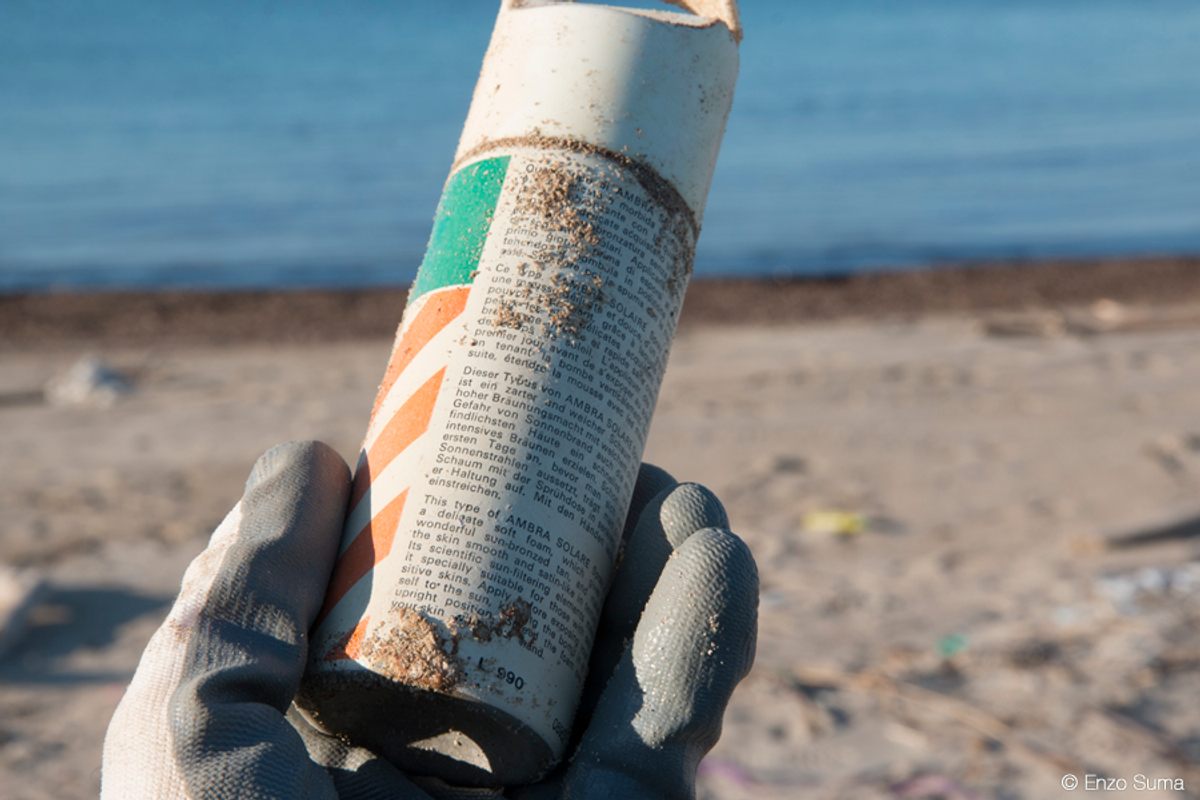
So Suma started looking for more old plastic waste. Within a week, he found a second object of some age, a green shower gel container from the 1970s, then a third, a blue glass cleaner bottle from the 1980s. He figured he was onto something, so he created a project to catalog the most interesting washed-up plastic he could find. With the help of like-minded amateurs, he scoured beaches and began a collection of the oldest-looking items. He then retraced the objects’ journeys as if they were ancient Roman amphorae, unraveling the puzzle of when they were produced, how they had been used, and how long they had been at sea. He set up a traveling exhibition to spread awareness about the pervasiveness of plastics in our waters and ecosystems. He called it Archeoplastica—the museum of ancient, washed-up plastic.
Archaeologists have always been interested in rubbish—sites such as waste heaps, middens, and latrines can be some of the richest places to learn about the human past. “We’ve always dealt with things that are discarded, with human malfeasance,” such as ceramic fragments or ancient tools, says Christopher Witmore, a professor of archaeology and classics at Texas Tech University, and a member of the editorial board of the Journal of Contemporary Archaeology. “But there’s been a change in the nature of these objects.” In the past, he says, rubbish tended to degrade over time. “We still have ceramics, but all the wooden implements, all the garments—so much is lost. That’s why sites like Pompeii are striking,” he says, because the volcanic eruption preserved all sorts of organic material. But modern rubbish such as plastic can remain unscathed for centuries or even millennia. “The things we produce now stretch far into the future,” he says. “That is a compelling attribute for archaeology: They don’t diminish.”
In a 1973 study that became known as the “Garbology” project, a group of scholars led by the late William Rathje began applying archaeological methods to investigate not centuries-old items, but contemporary waste. A new current of archaeology was born, interested in the rubbish humanity discards and forgets today. Just as with ancient trash, this work reveals a story about what people care about and value, and what they don’t. “We have no control over the afterlife of objects,” says Witmore. “And that lesson is one of the most profound ones we can have in a world where arguing that we have control is part of the problem.”

This kind of contemporary archaeology has turned our waste into a source of information—and a lot of people, both scientists and the rest of us, into archaeologists. “When sperm whales are found with abandoned fishing nets in their stomachs, when the carcass of albatrosses chicks are filled with cigarette lighters, bottle caps, and plastic straw—marine biologists, oceanographers, photographic artists, they’re all archaeologists,” he says. “We all become archaeologists because our malfeasance is really everywhere.”
For months, Archeoplastica was a solitary pursuit for Suma. He spent lonely days combing beaches near him to bring yet more plastic flotsam home—a container of talcum powder from 1961, an ice cream tub from the 1960s, a bag of chips that would have expired in November 1983. But once Suma started putting his photos and videos online and on social media, hundreds of people started sending him their own photos of objects they deemed worthy of Archeoplastica’s attention. “It’s almost as if nobody had realized before that these objects were there,” Suma says. Only a few of the tips he receives are interesting to the project: In many cases, they aren’t all that old or unusual. But about 10 people seemed to have a nose for interesting garbage, and an informal core of pickers was born.
Unlike, for example, beach clean-ups around the world, Archeoplastica is no organized remediation effort. Individuals go to beaches or rivers whenever they feel like it. In the winter, the sea often spews up thousands of pounds of twigs, lighters, toothbrushes, and toys after storms. With few tourists around, authorities and volunteers clean up sparingly, which means that any winter day is a good time to seek unexpected treasures.
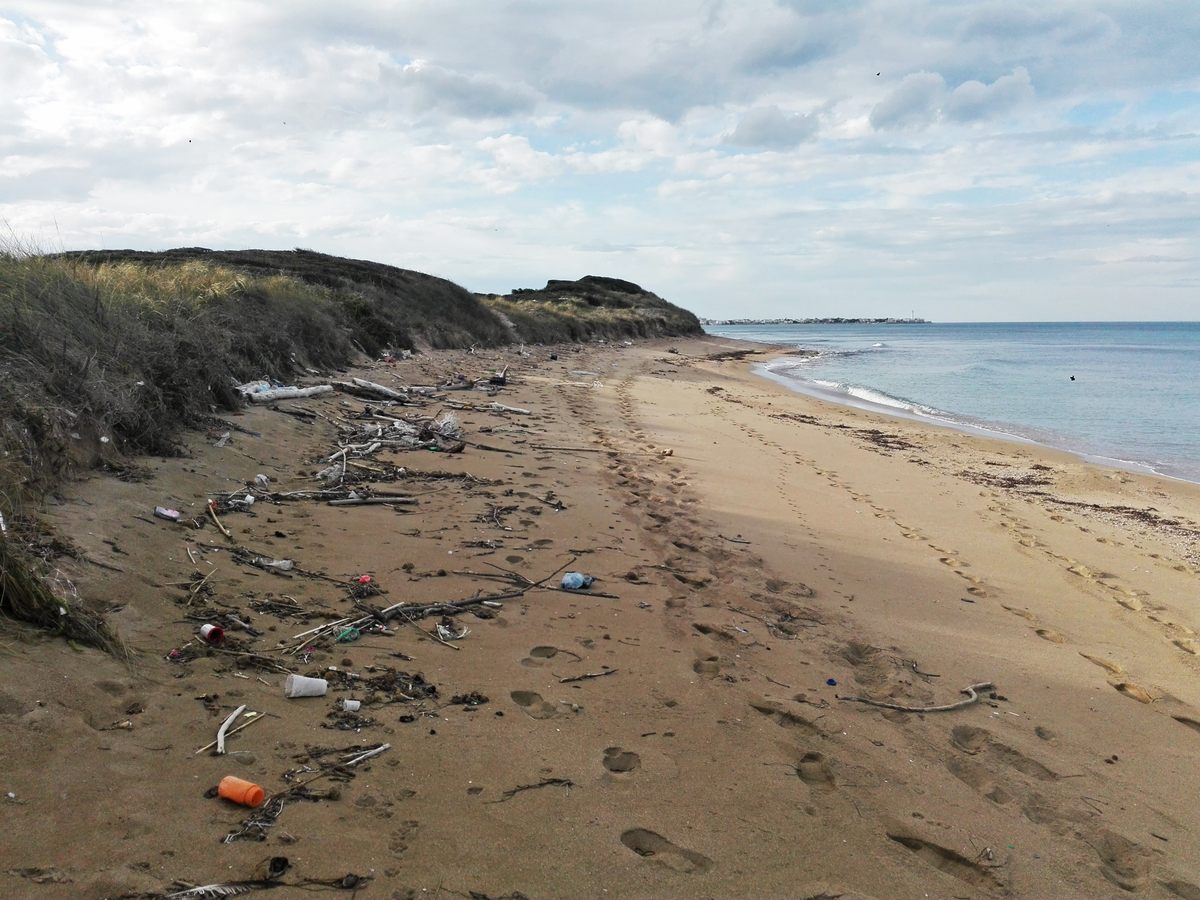
Suma says the items must also be aesthetically iconic—the kind of object capable of bringing people back to their childhoods. For example, during one of his walks, Suma spotted the official soccer ball of the World Cup in 1990. “I immediately thought, ‘Damn! Italia90!’” he says. “In that ball, I saw Roberto Baggio, Totò Schillaci,” citing Italian icons who played in the tournament. “It was an agonizing World Cup—how much have we suffered! Ah, Alessio, what have you missed!” (Ed: The writer wasn’t around yet to see Italy finish third on home soil.) Then his voice sinks, with a more pensive tone: The ball lay in the sand, deflated and hardened by the sun. “It sank in that it was waste that had floated at sea for three decades,” he says.
That’s the reaction Archeoplastica looks to trigger, and the stronger the nostalgia, the stronger the anxiety when people realize how long the rubbish has been on its mysterious journey.
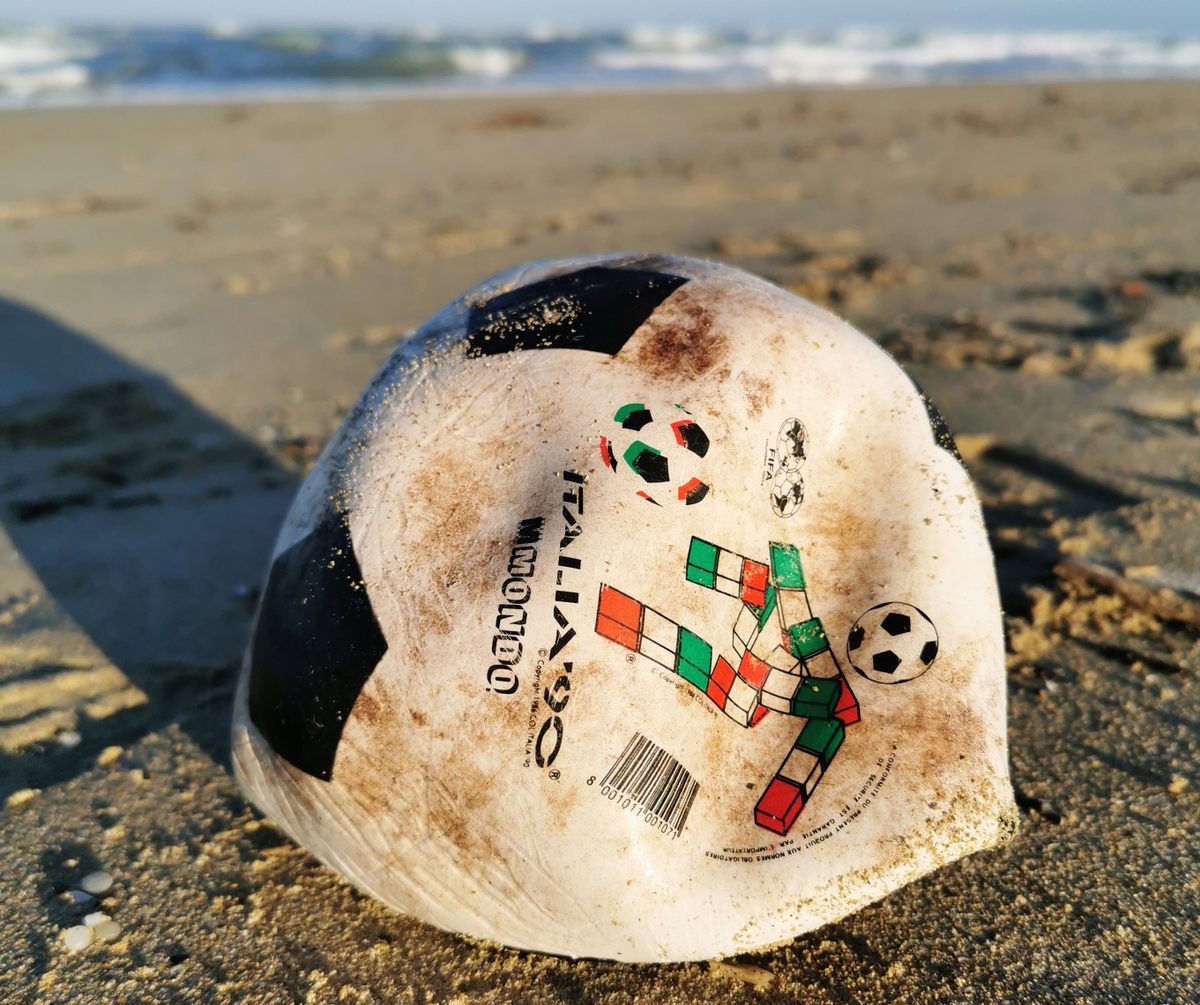
Another type of object Archeoplastica looks for is the obscure, strange, and outright sinister. “All objects with a human face become disturbing after the sea’s erosion,” Suma says. In some cases, deciphering what they used to be can be a challenge. In 2021, Suma found a grotesque plastic bottle in the shape of what seemed to be a clown holding a cup. It seemed old, and Suma sensed it might be of Greek origin, but he struggled to learn more about it.
So he posted a video on social media to ask for help, and by the end of the day, several users had gotten in touch with leads. A woman named Francesca quickly cracked the case. She looked into Greek honey brands and noticed that the bottle resembles a fictional character, a young boy, still printed on jars today. Suma then got in touch with the brand, which confirmed the story: The bottle depicted a child, not a clown, and used to contain honey that was sold in Greece in the 1960s.
Many people help crack these cases by asking older family members if they remember the objects. Perhaps surprisingly, another essential source is eBay. Many vintage ads—posters, framed pictures, magazine pages—are sold on the platform, presumably to collectors, and can contain key clues to brands and when certain designs were in use.

Of course, Archeoplastica wants all objects to be intact, or at least recognizable. But how well a plastic object might be preserved at sea depends on a number of factors—above all exposure to sunlight and high temperatures, according to Cristina Romera-Castillo, a chemist and oceanographer who studies how plastics degrade at sea. Romera-Castillo used to study something else, the reserves of carbon dissolved into oceans, but abnormalities started popping up in her work. She discovered that floating plastic patches were interfering with carbon distribution patterns. So she switched her focus to the plastics, the substances they release in seawater, and the conditions under which they degrade. She says floating plastic, exposed to higher temperatures and more sunlight, still takes centuries to break down. And that changes if plastic sinks deep in dark, cold waters. Under those conditions it is hard to guess how long it persists. “I don’t think anyone knows,” Romera-Castillo says. “I think it might never disappear.”
Archeoplastica’s following has ballooned to hundreds of thousands of people, and it is currently touring Italian schools and museums with a selection of nostalgia-inducing, eerily persistent plastics. But Suma, who still keeps the items—about 500 of them—in his garage, says it’s becoming difficult for him to find time for the project, especially during summer months, when his work as a guide takes up most of his days.

He says he has noticed some changes along the journey. Just as Romera-Castillo switched fields of study and archaeologists started looking into modern waste, Suma has noticed that plastics have had an impact on his instincts and how he sees the world. “When I walked on the beach before, I looked carefully at all the natural elements that signal the state of the sea, like algae, seagrass, and Neptune grass,” he says. Now he sees and analyzes species of a different sort. “If I spot plastic waste five yards away, I can already tell if it’s modern—I can even date objects just by looking at their shape, design, and label,” he says. He has even developed his own tastes (“I hate white plastic waste,” he says, for example. “I hate them.”), and he rues all the beach clean-ups he participated in before launching the project, and the weird treasures he never thought to have a closer look at. “I would pick all the waste and indiscriminately chuck it in a trash bag,” he says, somewhat wistfully. “Who knows how many things I’ve thrown away.”


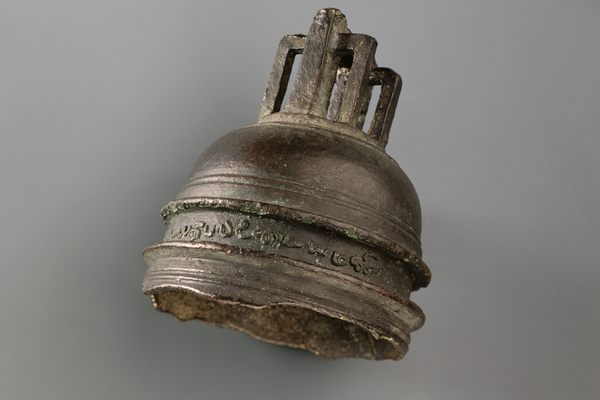

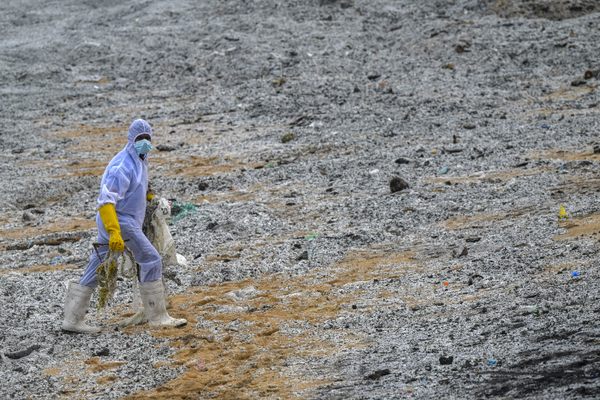
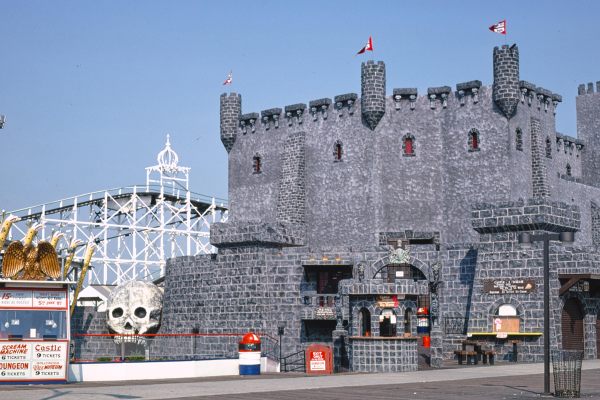










Follow us on Twitter to get the latest on the world's hidden wonders.
Like us on Facebook to get the latest on the world's hidden wonders.
Follow us on Twitter Like us on Facebook